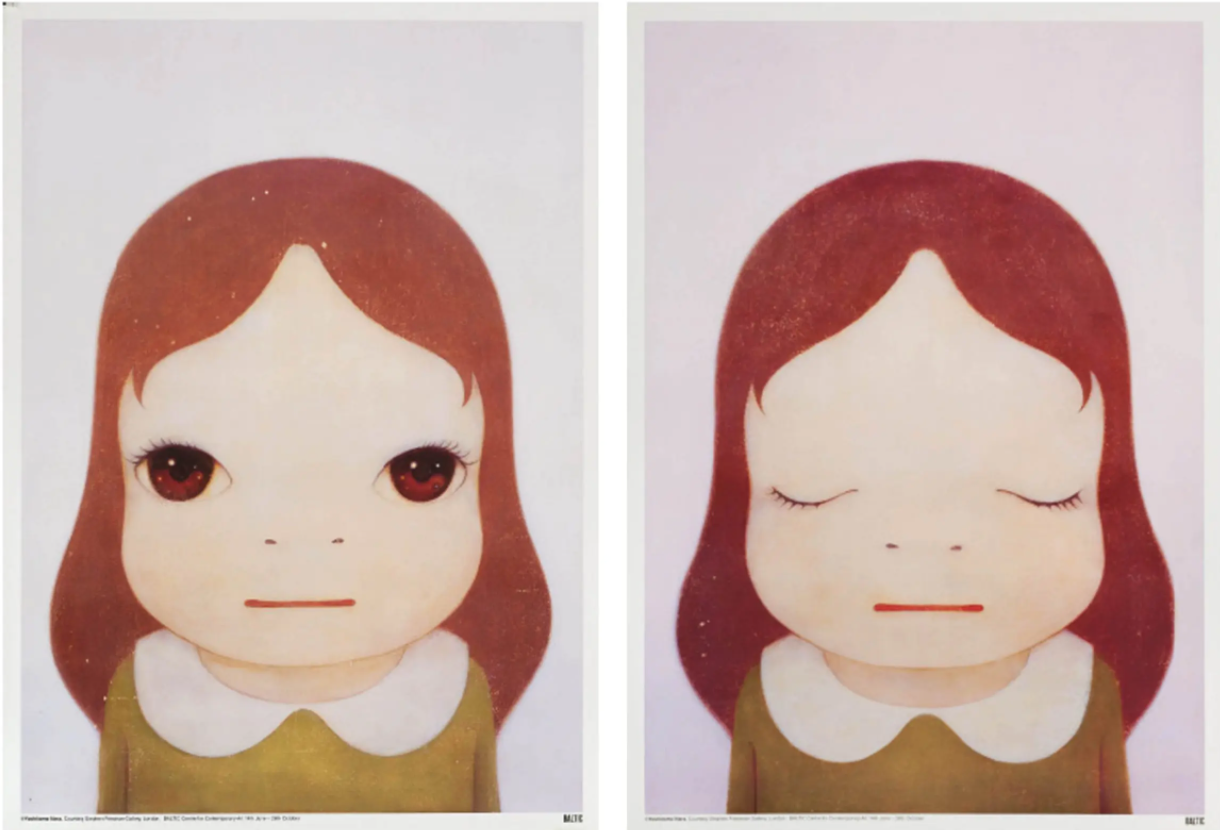Hype or Necessity? Auction houses in pursuit of new audiences
We often hear that auction houses are the most powerful players in the art market. They have an impeccable reputation, build huge cash flows and to this day act as a refuge for all kinds of elite types. The three oldest houses — Sotheby’s, Christie’s and Phillips — founded in the latter half of the 18th century, still lay claim to being leading players in the global art market. However, the reality is rapidly changing and this dictates new rules of the game even for such established giants. Curator and art consultant, Alisa Lisovskaia, talks about how they are responding to the challenges of time.

In 2020, auction houses took advantage of the hiatus to rethink their strategies. The focus has shifted to social networks, the search for a new audience, the promotion of mobile applications and collaboration. Moreover, it was not only the famous who were highly prized — those who could attract media attention and improve a brand’s reputation, but also giants of online commerce like eBay or Artsy. And it worked. Thus, Christie’s has significantly expanded the pool of buyers over the past two and a half years: new players have come to the auction house from ninety different countries. At the same time, 44% of new buyers were under 45 years old, and the average bill was $16,000 per purchase — mostly watches, bags and works by Chinese artists.

Collaboration: new acquaintances and proven names
In its pursuit of a new audience, Phillips placed its stake on artists of the 20th and 21st centuries to entice the younger generation. “An expanded client base is a critical component for the success of any business,” believes Scott Nussbaum, Senior International Specialist, 20th Century & Contemporary Art at Phillips. “We would like to overcome the perception of the auction house as an intimidating and elitist space and offer young collectors art that suits them.” Nussbaum believes that suitable artists include Avery Singer (born in 1987), whose work the auction house has sold twice, Tschabalala Self, who paints large-format paintings depicting black women (seven of her works were put up for sale at Phillips last year), Christina Quarles, based in Los Angeles, and KAWS, one of the world’s most famous street artists. Also, Phillips is increasingly targeting those who are used to shopping online. The auction house has even abandoned the printed catalogue format in favour of a virtual equivalent. This bold decision has been supported by many other auction houses aiming for sustainable development.
In contrast, Sotheby’s decided to offer old masters to the millennials and launched the corresponding advertising campaign. The auction house’s Senior Vice President and a specialist in the old masters, David Pollack, says the decision was made about five years ago. He believes it is very important to educate a new generation of collectors and nurture their interest in art, not only contemporary art. To this end, Sotheby’s signed a contract with Victoria Beckham in 2018. The singer, who shot to fame as a member of the Spice Girls, has exhibited works by the old masters at her London boutique. Another initiative of the auction house was the integration of artwork in the show of the musician Fabrizio Moretti. Together, these initiatives have significantly increased the audience of auctions. Interestingly, more than 25% of bidders were under forty, while the youngest was barely twenty.
Highsnobiety, a well-known online platform specialising in clothing sales, also features among Sotheby’s partners. It released a limited collection of T-shirts, sweatshirts and hoodies with paintings by Italian, Dutch and Flemish artists. A campaign just like it was organised with the support of Supreme, the iconic young people’s clothing brand.

Auctions online and offline
In 2020, against the backdrop of the coronavirus pandemic and the ensuing crisis, Christie’s organised an online auction with affordable prices, called Christie’s 100 — one hundred lots, each with a starting price of $100. Most of the works sold were by artists who need no introduction — Yayoi Kusama, KAWS and Jeff Koons. This initiative, well-known to the Russian-speaking public thanks to the Vladey auction, attracted more than ten thousand unique users who registered and participated in the auction using the mobile app. Noah Davies, a specialist in post-war and contemporary art at Christie’s, believes that three factors determine a work’s attraction for a young collector: multiple colours, small size and no need to invest additionally after purchase, such as in a special frame or restoration work.
In his video clip, famous auctioneer Oliver Barker focuses on the changes auctions have had to face over the last year. He notes that most of the bidding moved online quickly, so auctions during the pandemic continued as usual, without interruption or interference. Barker believes the main change to be the geographical spread of bidders: rapid digitalisation made it possible to connect players from New York, London, Hong Kong and other cities to a single auction. On the other hand, the auction room usually housed only representatives of the largest players in the art market, of course, in compliance with all safety requirements. Everyone else could place bids through the auction house’s website and its app. Of course, coronavirus-related restrictions greatly reduced the number of bidders. Given the large influx of newcomers and the increase in the average spend, these changes did not affect the revenue of the auction houses.

Sneakers vs NFT: new range, new markets
An expanded range is another strategy that auction houses have been deploying actively. In June 2019, Sotheby’s ran a successful auction, selling rare sneaker models, thus confirming that the search for new product categories is the right tactic. Noah Wunsch, global head of eCommerce at Sotheby’s, says that things like sneakers are desirable objects among “very serious buyers”. For example, in September 2019, during the lockdown, a 17-year-old collector from Vancouver bought a complete archive of 248 Supreme skateboards at Sotheby’s in New York for $800,000, while another purchased a pair of legendary basketball player Michael Jordan’s Air Jordans for $560,000.
Before the pandemic, Sotheby’s also offered its clients the chance to buy or sell vintage clothing on its platform. Auction houses like Julien’s Auctions and Bonhams have found a new audience in comic-book movie fans who buy items that have appeared in famous films. Similarly, VanDerBrink Auctions, back in 2016, arranged the sale of property belonging to film director Wes Anderson. After this, Sotheby’s organised several events involving well-known film-industry figures and moved these programs online. For example, in May 2020, the auction house offered its clients the opportunity to enjoy Adventures of Instagram in the style of Wes Anderson with Wally Koval. Actor and designer Waris Ahluwalia, Editor-in-Chief of Conde Nast Traveler magazine Melinda Stevens, and Charlie Foxhall, Sotheby’s jewellery and watch specialist, joined the webinar of the creator of this legendary account.
These examples show that auction houses are trying to cover as many different industries as possible to expand their sphere of influence. In this regard, another recent Sotheby’s initiative appears logical — a virtual Contemporary Conversations event with Marina Abramovic and other artists.

However, the greatest sensation of the last year was the appearance at auction of NFT art. A lot by the artist Beeple sold at Christie’s for a record $69 million. Following this, the auction house made significant changes to its catalogue of 20th- and 21st-century works. What previously fell under bidding for Impressionism and Modernism or Post-War and Contemporary Art is now divided into 20th-century Art and 21st-century Art. Experts consider this move a tectonic shift in how we talk about the art of a designated period. “We are embodying the spirit of evolution and want to change the way 20th- and 21st-century art is represented to meet today’s demands,” explains Alexander Rotter, Chairman of Christie’s 20/21 Art Departments. “We live in an era of change and this has had a colossal impact on the art world and altered our understanding of the art of the past.”
The conquest of the millennials
Every auction house is fighting actively in its own way for neophyte collectors, especially from the generation of millennials who are now seen as the people most involved in all manner of technological change. They use devices and applications far more than other generations; they love innovation, appreciate efficiency and comfort, and spend considerably to maintain their social status. Focusing on new social groups has significantly altered the marketing and PR strategies of auction houses. In particular, many of them have engaged influencers to attract a new audience.

Over the last five years, Yuki Terase, Sotheby’s Director in Hong Kong and Head of the Asian Modern Art Department, has organised three initiatives aimed at a younger audience. All of them involve celebrities and opinion leaders. She believes that, through successful collaboration, the auction house is becoming associated with these names and brands on a personal, cultural and aesthetic level. For example, in June 2018, Sotheby’s ran the Curated: Turned it Up auction, which was aimed at the eclectic tastes of young Asian collectors under the age of forty. In this way, the auction house’s brand is gradually being rejuvenated and altered.
To find common ground with their audience, many auction houses try their hand at educational events. In 2018, Phillips launched a discussion series on the works of old masters, involving the former director of the Brooklyn Museum, Arnold Lehman. Sotheby’s is organising evening sessions, where collectors can learn how to verify the integrity and provenance of a work and understand the painting. Christie’s is also hosting similar events called Christie’s Lates in London, Hong Kong, Shanghai and New York. Also, the launch of Christie’s Young Collectors Club was announced in September 2019. The programme includes monthly events and discussions with art consultants, artists, foundations, galleries and other parties to the artistic process. Auction house representatives believe that the launch of educational programmes aimed at different audiences helps democratise the art world and enables new players to acquire new knowledge about the subject.
Overall, the auction houses provide a vivid example of a survival strategy that involves managing human behaviour, desires and fantasies. Observing the transformation of these giants of the art business help us understand the trends that different industries are following and how the art world is likely to change in the near future.
